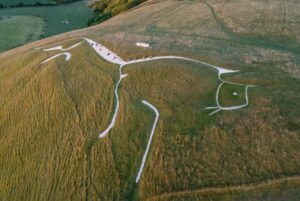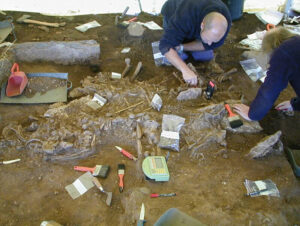Deep in the mountains of Turkey’s Çorum province, an ancient tomb fades into obscurity. Its past is almost forgotten and its future looks bleak. Details of its construction and the occupant inside are unknown. For thousands of years, the Kapilikaya rock tomb has been both a hidden architectural marvel and an extraordinary puzzle.

The trail that leads to the tomb. Photo: Savas Bozkaya/Shutterstock
Çorum province lies not far from the Black Sea, on the Central Anatolian Plateau near the North Anatolian Fault. Tectonic activity has created diverse rock formations, enhanced by folding and faulting.
According to sources, the word Kapilikaya means precisely what it is: a rock with a door. The Kapilikaya rock tomb dates to the 2nd century BC, during the so-called Hellenistic Period. Some Turks believe that the tomb is Roman, not Greek. Modern Turks and Greeks often don’t get along.
Unknown builders carved the tomb into an outcrop. A trail on the left side leads up to a set of stairs at the base. Unfortunately, the base of this doorway is a canvas for graffiti artists.

The cave entrance sits partway up a cliff. Photo: Shutterstock
The mysterious inscription
From the outside, the tomb’s entrance looks like a massive doorway. In fact, the door doesn’t open, it never did, and there isn’t much space inside. Rather than the giant grotto suggested by the imposing size of this faux-door, it is simply a small crypt with little room for anything except a body.
The real entrance is the little square hole in this doorway/rock plug. The hole is about one metre high, a little less wide, so big enough for a smaller person to crawl through. There doesn’t seem to have been any archaeological work done on what, if anything, is inside.
A mysterious inscription, “IKEZIOS”, sits at the top of the entrance. As with so much about this tomb, the word’s meaning is uncertain. One theory suggests that it is the name of a Greek commander. Around that time, the territory was Greek. For now, all we can say with confidence is that the person buried in such a tomb was important.
The tomb is unprotected, and curious visitors can roam around.
Rock tombs are not uncommon in these parts. Typically, they housed the bodies of nobles and the monarchy. There are many examples of them in Israel, Jordan, and other parts of the Mediterranean and Saudi Arabia. Egyptian pharaohs like Ramses II had grand tombs cut deeply into a natural wall. Theirs was considerably more elaborate than this mysterious yet humble crypt.

Ramses II’s temple. Photo: AlexAnton/Shutterstock






